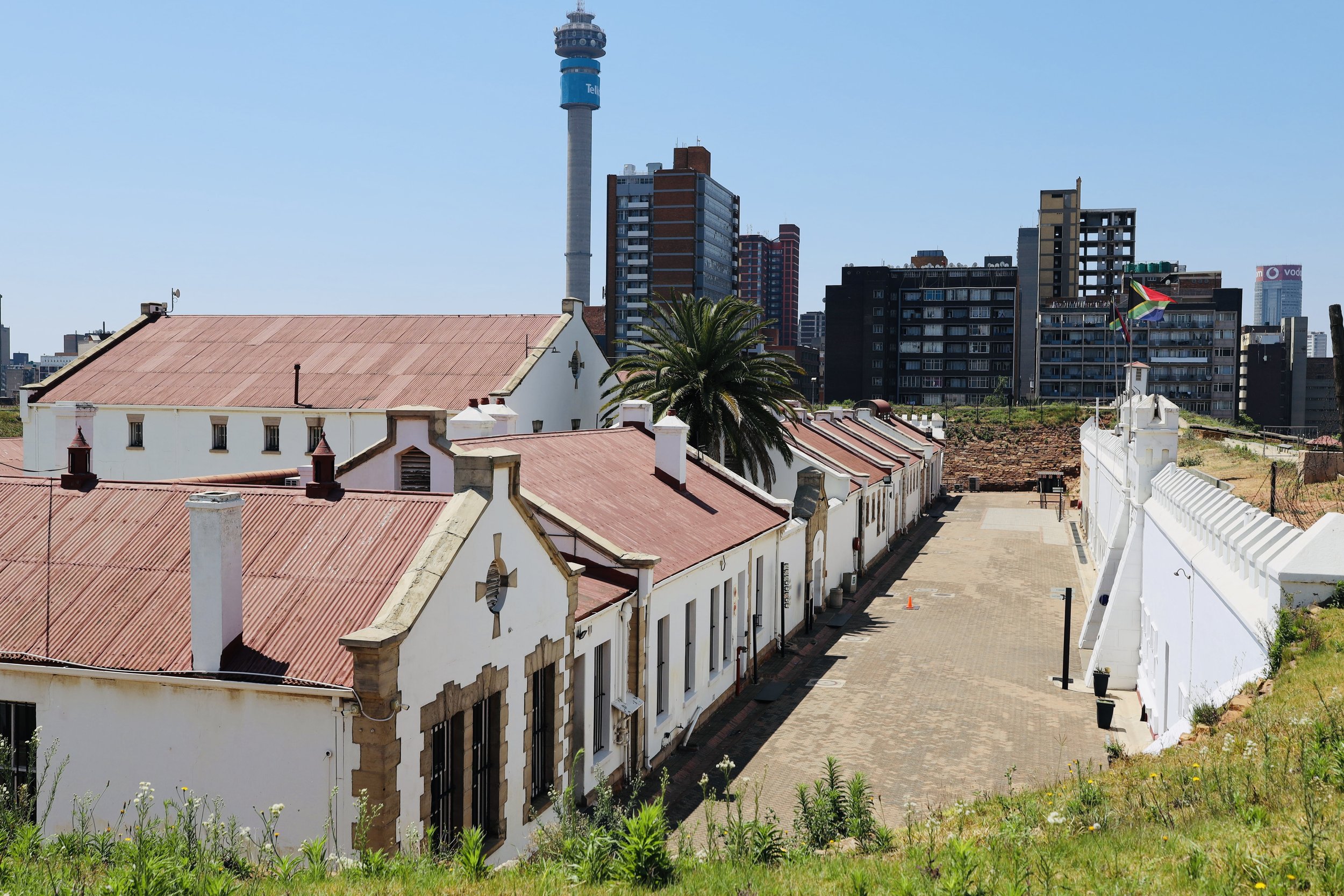Jen and I arrived in Johannesburg to find South Africa’s largest city reeling from a turbulent post COVID recovery. State-owned utilities were crumbling, unemployment had reached epidemic levels, and daily blackouts were wreaking havoc. The constant power outages had become so bad that insurance companies were deploying their own team of wardens to direct traffic, no doubt hoping to reduce the number of claims caused by knocked out signals.
Yet despite these issues, it didn’t take us long to discover a vibrant, friendly city with tons of character. We based ourselves in the leafy suburb of Parktown, an upscale district with a smattering boutique, hotels, restaurants, and art galleries. Here the tranquil, tree-lined streets provide a haven for all manner of song birds, while sweet smells from flowering bougainvillea and jasmine filled the air.
Jo’berg was founded in the late 19th century as a gold rush town. Up to half of the world’s gold supply has been mined from the area, with some mine shafts extending up to 4 kilometers below ground. As the city rapidly expanded, the all white government began separating black residents into townships thereby laying the foundations for the apartheid state that followed in the early 20th century. The most famous are the South Western Townships known as Soweto. Vilakazi street in Soweto was once home to iconic leaders of the anti-apartheid struggle Nelson Mandela and Archbishop Desmond Tutu.
Nelson Mandela’s house has now been converted into a small museum, with photos and exhibits. Despite Mandela’s arrest and imprisonment in 1963, Soweto remained at the centre of the struggle to overthrow the apartheid regime. The history of suffering from this period is laid out in vivid detail at Jo’berg’s Apartheid Museum. Under apartheid, institutionalized racial segregation dictated the daily lives of nonwhite citizens. On arrival at the museum, we passed through designated white or nonwhite entry points, a poignant reminder of the indignity caused by racial segregation.
In 1976, the student-led Soweto uprising resulted in the death of 16-year-old Hector Pieterson and many other school children at the hands of the white police. Photos of those tragic events led to international condemnation and, together with continued political pressure, apartheid eventually collapsed. In 1994, free and fair elections were held resulting in Mandela’s inauguration as South Africa’s first black president.
Among the first acts of the newly-elected government was the formation of a constitutional court to protect the rights enshrined in the new democratic constitution. The court was established in Johannesburg on the historically rich site now known as Constitution Hill. First used a a fort, and later a prison (both Mandela and Gandhi were detained here) the complex has been partially restored to remember the city’s difficult past. In a symbolic gesture, bricks from some prison buildings were used to create the court house, representing hopes for the future.
Most tourists probably skip Johannesburg to go directly to Kruger National park, which is home to the lions, cheetahs, rhinos and other wildlife Africa is famed for. This will be our next stop, but we also thought a few days in Jo’berg offers an important glimpse into South Africa’s recent history.
By Tom Mountford





